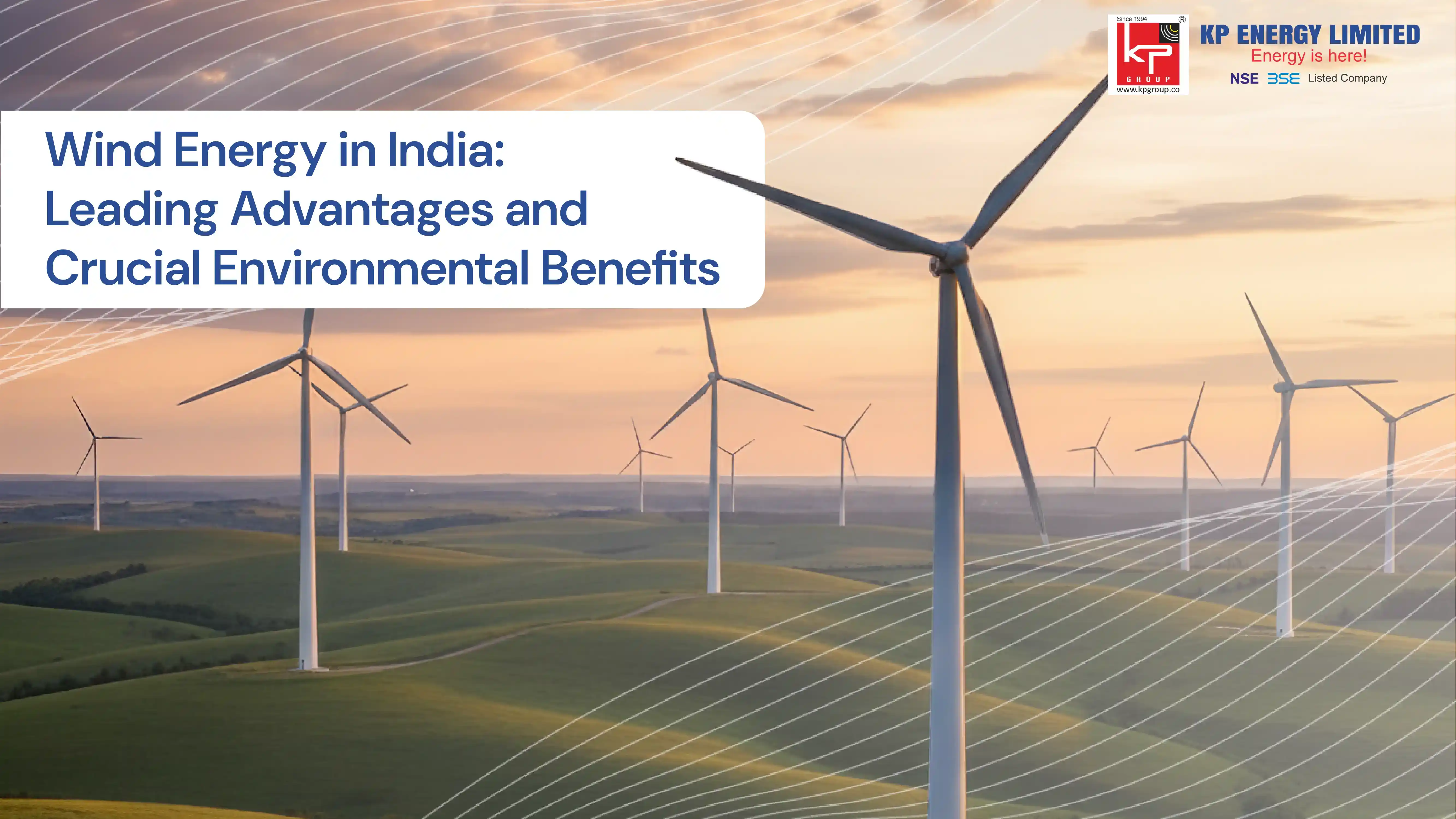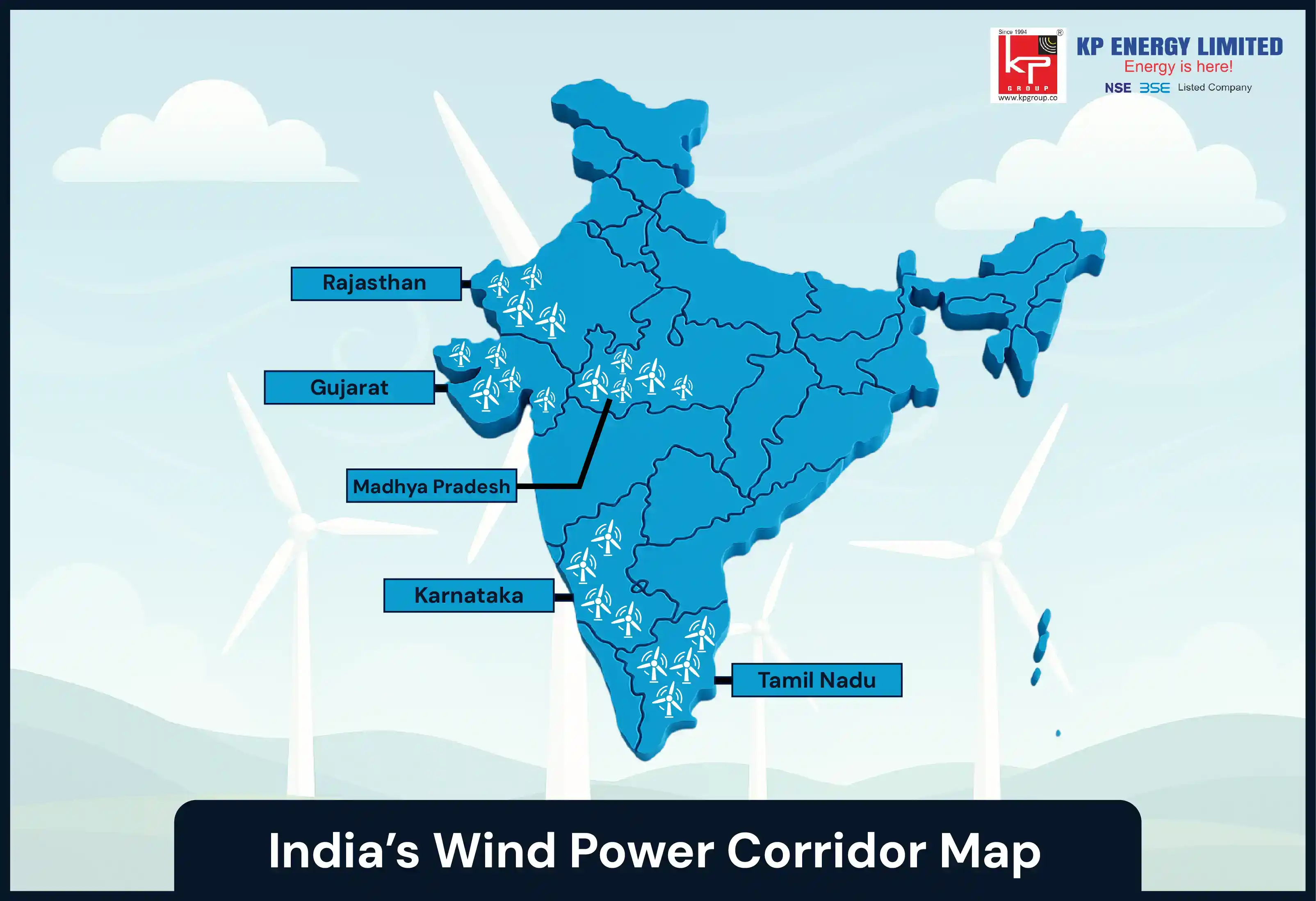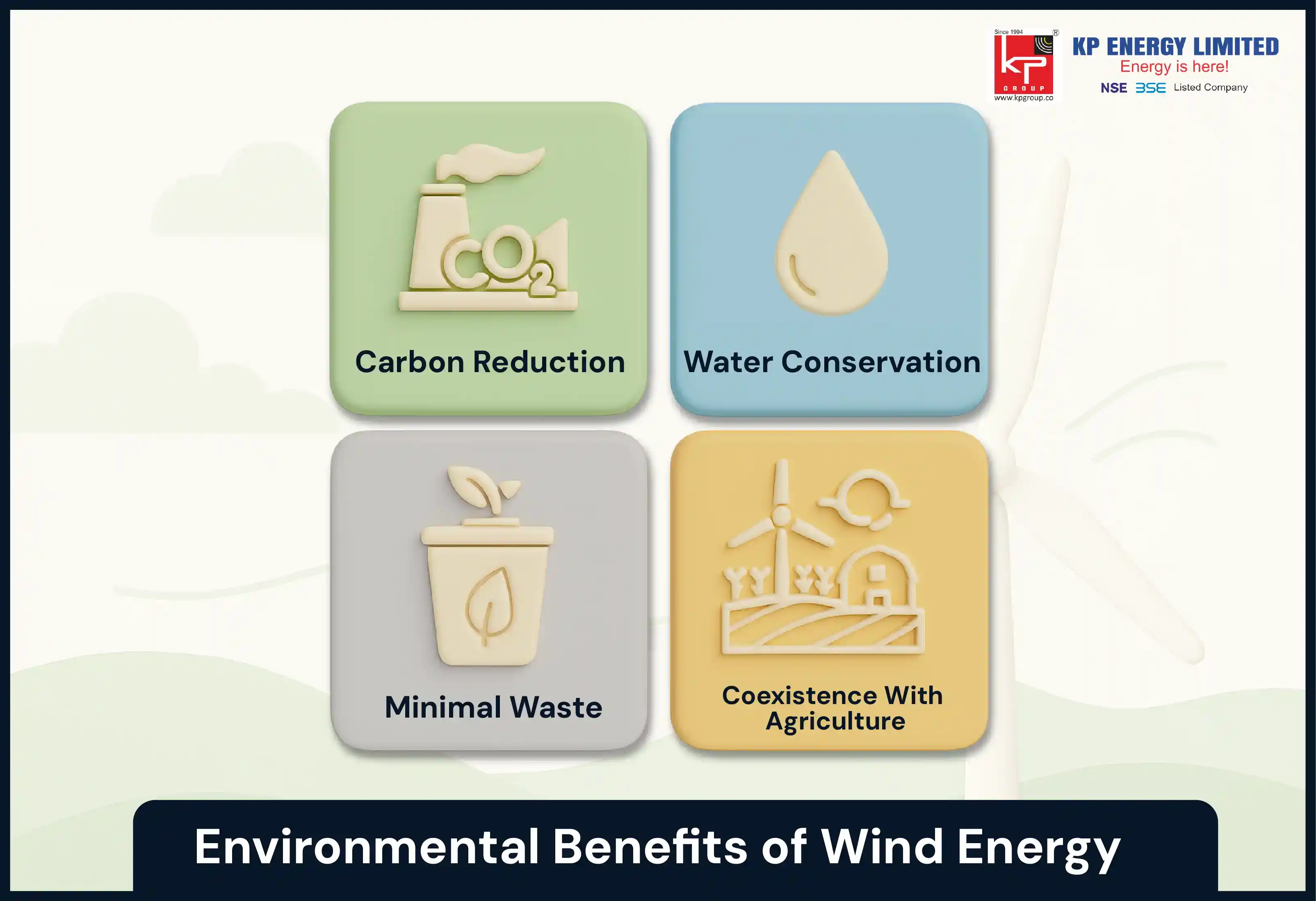
As India continues to move toward replacing its energy with clean energy, wind energy stands as a core pillar of the country’s renewable future. The advantages of wind energy in India are vast, it is clean, sustainable, and reliable. With its renewable capacity and expanding infrastructure, wind power is growing the energy sector. It supports industries, rural communities, and reduces ora evades emissions from carbon fuels.
Wind energy is certainly the clean energy source with by far the most potential in India due to its economics, scale, and ability to mitigate pollution. In the following discussion, we will explore the environmental benefits of wind energy, particularly in the context of the significance of wind energy on India's visionary path towards green growth.

High Wind is a plentiful and renewable resource available in many states, like Gujarat and Tamil Nadu. Unlike coal or oil, it is a clean, renewable energy in India that will not run out. By depending on this sustainable power, India reduces its reliance on finite fossil fuels while contributing to wind energy for a greener future.
The Levelized Cost of Energy (LCOE) for wind continues to decline with advances in technology and government-supported large-scale projects. Wind energy is typically less expensive than coal-based electricity today and an important part of sustainable wind energy India.
Modern turbines are efficient and require minimal maintenance. Even with initial capital expenditure, renewable energy benefits for India come from wind’s long-term low-cost operation.
Every unit of electricity is generated through wind that directly replaces power that would have otherwise come from fossil fuels. The wind power advantages in India include lowering dependence on coal and gas while ensuring a steady, renewable alternative.
As oil and gas depend on international market fluctuations, wind power does not. This price stability is among the key advantages of wind energy in India, which prevents the economy from global fuel shocks.

Wind energy supports employment opportunities across different sectors like engineering, logistics, and operations. By 2030, India expects millions of jobs in this sector, and delivering renewable energy benefits for India.
Wind projects not only supply electricity but also improve rural infrastructure, like roads and training centers. These developments help in growth, empowering villages with sustainable wind energy India.
Wind energy adds diversity to the national grid and strengthens supply stability. This is a key impact of wind energy on climate change, as it reduces the dominance of fossil fuels while ensuring resilience.
By generating power domestically, wind reduces India’s dependence on imported oil and gas.
Wind farms occupy a small area of land that allows the agricultural operations to continue around the turbine installations. This demonstrates one area of environment benefit of wind energy, specifically, agriculture can coexist with renewable energy to provide food security.

There are no direct carbon dioxide emissions from wind turbines generating power. The use of wind energy reduces greenhouse gases and thus helps India move towards sustainability.
Wind turbines do not require any water for cooling like thermal plants. This is an essential benefit of renewable energy sourcing for countries like India, especially for the regions that are currently water-stressed. Wind energy protects freshwater resources while producing energy.
Wind energy creates negligible waste across its lifecycle. This underscores why wind energy is good for the environment; it is low-impact, clean, and efficient.
Wildlife and Avian Impact: With modern radar monitoring and site selection, projects reduce risks to wildlife.
Land Use Optimization: Strict environmental standards help balance energy production with habitat conservation.
Managing Noise and Aesthetics: Advances in design make turbines quieter and visually appealing, reducing community concerns.
At KP Energy Limited, we drive India’s wind transition through end-to-end solutions, from site surveys and installation to maintenance and workforce development. Our services deliver:
Custom wind turbine installations
Site-specific design and planning
Manages permits and approvals
Through our projects, we showcase the advantages of wind energy in India, supporting both industry and community needs while enabling wind energy for a greener future.
As India is progressing in order to commit to 500 gigawatts by 2030 of renewable energy with wind energy, it is not only producing energy but jobs, health, resource savings, and climate resilience. Wind energy has become one of the largest contributors to climate change, and it will play an important role in becoming a pollution-free economy.
With the leadership of companies like KP Energy Limited, India is moving closer towards sustainable wind energy India, allowing a safe, affordable, supplier, and clean energy future.
Q1. Why is wind energy important for India’s renewable future?
A. Wind energy is crucial because it provides clean, sustainable power while reducing dependency on fossil fuels. It helps India meet its renewable energy targets, improves energy security, and supports climate change mitigation.
Q2. Which states in India have the highest wind energy potential?
A. Gujarat, Tamil Nadu, Maharashtra, Karnataka, and Rajasthan are the leading states with the highest wind energy capacity due to their favorable wind corridors and coastal geography.
Q3. How does wind energy benefit the environment compared to coal or gas?
A. Unlike thermal power, wind turbines produce zero direct greenhouse gas emissions and do not consume water for cooling. This makes wind energy one of the cleanest power sources, conserving natural resources and reducing air pollution.
Q4. What are the economic advantages of wind energy in India?
A. Wind energy lowers electricity costs over time, creates jobs in manufacturing, installation, and O&M, and boosts rural development through infrastructure upgrades. It also stabilizes energy prices by avoiding reliance on volatile global fuel markets.
Q5. Can wind farms coexist with agriculture and local communities?
A. Yes, wind turbines occupy minimal land, allowing agricultural activities to continue around them. In fact, wind projects often improve local infrastructure and provide new income opportunities for rural communities.